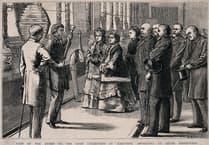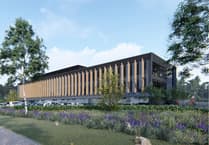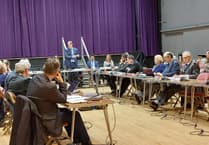The obvious first requirement is a route to follow. There is enormous personal satisfaction to be gained in establishing a route for yourself, checking it out and then leading others on it.
I use the Ordnance Survey app on my phone, which can track and record a route undertaken on foot. The app has a gps function and always shows the user’s current location.
A first consideration is the starting point where the group will park their cars and meet to start the walk. I always make a note of car parks marked on an OS map, and note comments made by others about a particular area or details on websites/Facebook pages about other walks.
When planning for a location I have never visited, it can also be useful to use Google Streetview as well as aerial view to get an idea of where the parking is and how suitable.
Another additional option is to have either the OS or what3words app on the phone, so that when I am out in the countryside and notice a parking spot near a footpath, takes only a few moments to run the app.
If it is felt there should be a maximum distance/time to be taken getting to the start of a walk, AA or RAC route planners give a good guide to driving times. Check also is there is a convenient bus or train service.
Undertaking a recce before leading a walk is of paramount importance.
I now use the gps locator on my phone in conjunction with the OS app.
It is helpful to make a mental note of markers, like footpath junctions, and also of any obstacles like dodgy stiles, concealed barbed wire, churned-up tracks if an ‘off-piste’ detour is possible, and busy road crossings so walkers may be properly briefed before starting the walk.
If just a map and compass are used, look out for position markers such as footpaths turning off the route that will show distance travelled along the main path.
When passing through or alongside woodland, take note of where it starts and ends to mark position.
Also, when passing it by, is the woodland on the correct side? If not, then a wrong turn has been taken.
With practice it becomes increasingly easy to realise a mistake quite soon after going wrong.
If using gps, don’t forget these basic skills, though. Don’t simply assume but check!
Rather than being an onerous task, this all becomes a satisfying aspect of the countryside experience.
It’s helpful to ensure that when actually leading the walk, I know exactly where I’m going!
I always like to sit down before I return home, in the car or over a relaxing pint, and just browse the route I have just completed. Committing the whole thing to memory is obviously too much like hard work – this isn’t a nasty homework project!
However, I like to recall the twists and turns of the route and when I go back there’s a fair chance that much of it will seem familiar.
Again, a part of the whole countryside experience.
Lastly, and by no means a common occurrence, Ordnance Survey maps can very occasionally be misleading.
A field boundary is a useful marker of position, but hedges can sometimes be ploughed out to make larger fields, although indications may remain on the ground.
It might seem impossible that a wood will magically appear, but it is possible for an area of scrub to be enclosed by quick- growing conifers for purposes of game bird rearing and for this to be completed before the overtaxed OS surveyors can record it!




